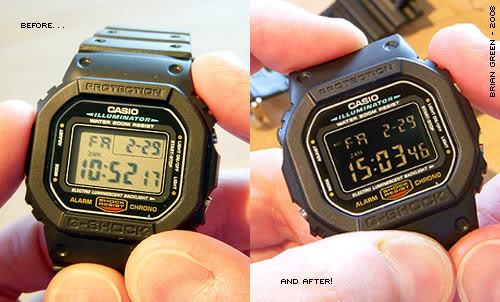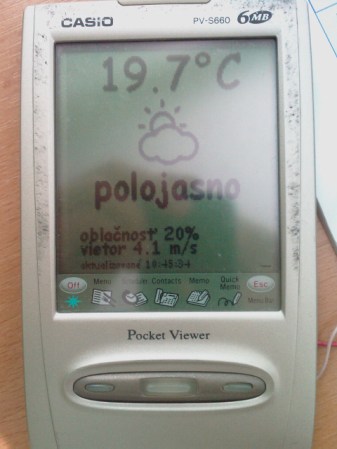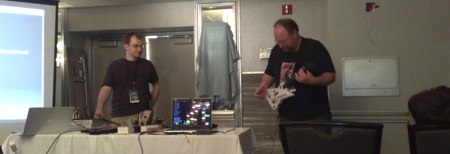
Sometimes you have to bust out the wayback machine to find a good hack. Back in 2008, [Brian] performed this awesome negative display hack on his classic Casio G-Shock watch. The G-Shock, like most digital watches, uses a twisted nematic LCD. All Liquid Crystal Displays are made up of a layer cake of polarizers, glass, and liquid crystal. In non touchscreen displays, the top layer is a sheet of polarizing film glued down with an optical quality adhesive.
[Brian] disassembled his watch to reveal the LCD panel. Removing the glued down polarizing film can be a difficult task. Pull too hard and the thin glass layers will crack, rendering the display useless. After some patient work with an X-acto knife [Brian] was able to remove the film.
Much like the privacy monitor hack, the naked watch appeared to be off. Holding a sheet of linear polarizing film between the watch and the viewer reveals the time. If the film is rotated 90 degrees, the entire screen is color inverted. [Brian] liked the aesthetics of the inverted screen, so he glued down his polarizing film in the offset position. After reassembly, [Brian’s] “customized” watch was ready to wear.
[Via Hacker News]













